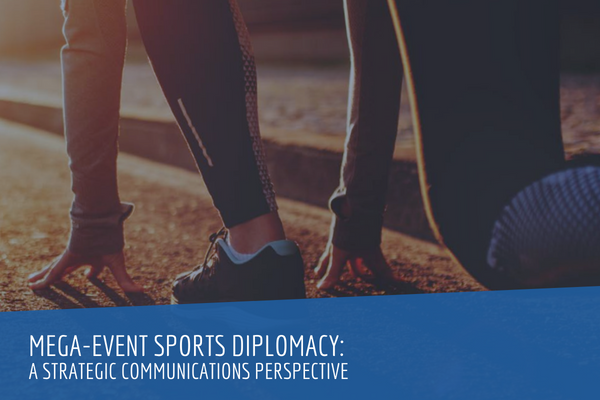International sports competitions have perhaps the second most widespread and normalised use of national flags and symbols after the military. Undoubtedly, sport—both in terms of athlete accomplishments and sporting events organisation—are a source of reputation for a country. Nations use sport to tell stories of their role in fostering achievers, winners, overcomers, and even triumphant underdogs. International sporting events are drama-laden displays of national unity and purpose.
Sport is increasingly featured in national strategic documents pertaining to public diplomacy. Different in size, form, and vision, the documents nonetheless demonstrate that there is a certain strategic communications approach to sport, which might point to high soft power value. Using both the strategies and the communication surrounding mega sports events, this report aims to analyse and compare the national strategic communications messaging—what stories nations tell, and how they position themselves externally. This research adopts the NATO Strategic Communications Centre of Excellence definition: ‘Strategic communications encompass multiple elements of public diplomacy, political marketing, persuasion, international relations, military strategy, and many others. Strategic communications [are] a holistic approach to communication, based on values and interests, that encompasses everything an actor does to achieve objectives, in a contested environment. Building on Michelsen and Woodier’s research specifically on Olympic strategic communications, the strategic communications aspect of sports diplomacy is defined here as sport-related planned interventions into the information environment, ‘with observable effects on that environment, which serve international political ends’.
